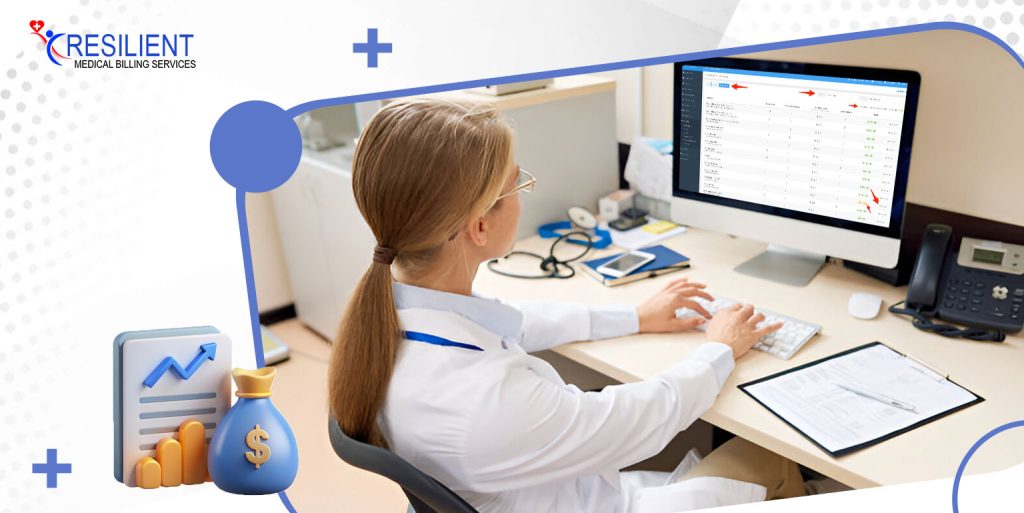Accurate primary care billing is essential to any healthcare company’s finances. Unsurprisingly, up to 80% of medical invoices contain inaccuracies, causing claim denials, delayed payments, and cash flow issues. Billing and coding errors cost healthcare companies $125 billion yearly.
These issues come from complex coding systems, refused claims, sluggish payouts, and 9–12% denial rates. These issues waste resources and harm patient care if ignored.
This blog offers tips for billing optimization for primary care physicians. Taxonomy codes can help to file accurate claims and maximize payments. By knowing taxonomy codes, suppliers can reduce errors, increase acceptance, and speed up invoicing.
What are Taxonomy Codes?
In healthcare billing, the taxonomy code system sorts workers by what kind of care they offer. These alphanumeric identifiers were created by the National Uniform Claim Committee (NUCC) so that specialties like internal medicine, pediatrics, or cardiology could find healthcare workers. They help process claims by ensuring insurance companies and Medicare can correctly determine providers’ skills and services.
Specific taxonomy numbers show Specialties and subspecialties in internal medicine. The taxonomy number for general internal medicine services is 207R00000X. For subspecialties in internal medicine, the taxonomy numbers 207RA0000X for allergies and immunology and 207RC0000X for cardiology are also valid. These codes affect billing and payment because they help insurers determine what services and areas a doctor offers.
Assigning the Correct Taxonomy Code
Giving a provider or facility the correct taxonomy code is necessary to avoid claim rejections and payment delays.
By following these steps, professionals will be able to give the correct category code:
- Look over the service-related specialty or area of knowledge.
- Look at the set of NUCC category codes.
- You should pick a code that fits the provider’s skills and care.
- Check all your entries twice to avoid billing issues and delays in getting your money back.
- By correctly giving taxonomy codes, practitioners can improve billing accuracy, reduce claim denials, and speed up the revenue cycle.
Importance of a Primary Care CPT Code Cheat Sheet
People who work in health care, especially primary care doctors, need cheat sheets for CPT codes. The quick reference guide speeds up the primary care billing process and ensures service codes are used correctly and quickly.
Errors, denied claims and bad revenue cycle management are less likely to happen. Doctors and office workers can focus on caring for patients and ensuring that paperwork and bills are correct when they have a well-organized tip sheet.
Most Commonly Used Codes in Primary Care Billing
Primary care billing typically includes evaluation, management, preventive care, and routine procedures. Some of the most commonly used CPT codes in primary care are:
99201-99205: New patient evaluation and management (E/M) codes
99211-99215: Established patient E/M codes
99381-99397: Preventive care visits based on age
12001-12018: Simple wound repairs
90471-90474: Immunization administration codes
99201-99205: New patient office visits, varying by complexity.
99211-99215: Established patient office visits, also categorized by the complexity of the service provided.
The code that should be used for a patient is determined by the severity of their condition and the length of their stay.
1. Preventive Care Codes
Preventive care is important to primary care because it keeps people healthy. Preventive care CPT Codes that are often used are:
99381-99387: Initial comprehensive preventive exams for new patients, categorized by age.
99391-99397: Periodic comprehensive preventive exams for established patients, also categorized by age.
These codes cover screenings, immunizations, and counseling services aimed at preventing diseases and promoting overall health.
2. Procedure Codes
Physicians often perform routine procedures like minor surgeries, wound care, and diagnostic testing in primary care. Common procedure codes include:
12001-12018: Simple wound repairs (sutures).
10060-10061: Incision and drainage of abscesses.
90471-90474: Immunization administration for vaccines.
Procedure codes help the practice’s billing system work better by ensuring these common services are billed correctly.
Common Primary Care CPT Codes
Here are some common general care CPT codes and what they mean:
99213: Established patient visit, moderate complexity.
99395: Adult periodic preventive exam, ages 18-39.
12002: Repair of a superficial wound 2.5 cm or less.
90460: Immunization administration through 18 years of age via any route, with counseling.
81002: Urinalysis, non-automated, without microscopy.
Billing for Urgent Care Visits
For proper coding and reimbursement, medical billing services needs to be able to tell the difference between urgent care and regular care trips. Urgent care takes care of accidents and illnesses that aren’t life-threatening and don’t need to be treated in the emergency room. On the other hand, primary care billing takes care of long-term health problems and regular checkups. Knowing the difference keeps bills, mistakes, and payment delays from happening.
CPT Code for Urgent Care Visit
Importance of Accurate Follow-Up Coding
Correct follow-up coding is important for keeping up with patient care and managing the primary care billing income cycle. Correct coding ensures that the follow-up visit includes the care needed to keep an eye on how well the patient is recovering or responding to treatment. This level of accuracy keeps insurance companies from turning down cases or paying too little because of bad coding.
After the first visit, CPT codes are often the same, but they can change based on how complicated the treatment is. There are different levels of help, from a simple visit (99211) to full care management (99215). Global period numbers may be used for follow-up care or visits after surgery. For proper billing, you need to follow each buyer’s rules.
Partner with Resilient MBS for Expert Primary Care Billing Services!
Primary care billing and follow-up billing must be correct for compliance and maximum compensation. To bill, you must be able to tell the difference between urgent care and general care visits, use the correct CPT codes, and keep good records. Correctly code follow-up visits to ensure service continuity and avoid claim rejections.
Get in touch with Resilient MBS right away for help optimizing your payment process. Our skilled team ensures that primary care billing, follow-up visit codes, and revenue cycle management are all done correctly and in line with the rules.
With our help, you can get more reimbursements and fewer rejections. Contact us to find out how Resilient MBS can help your business.










